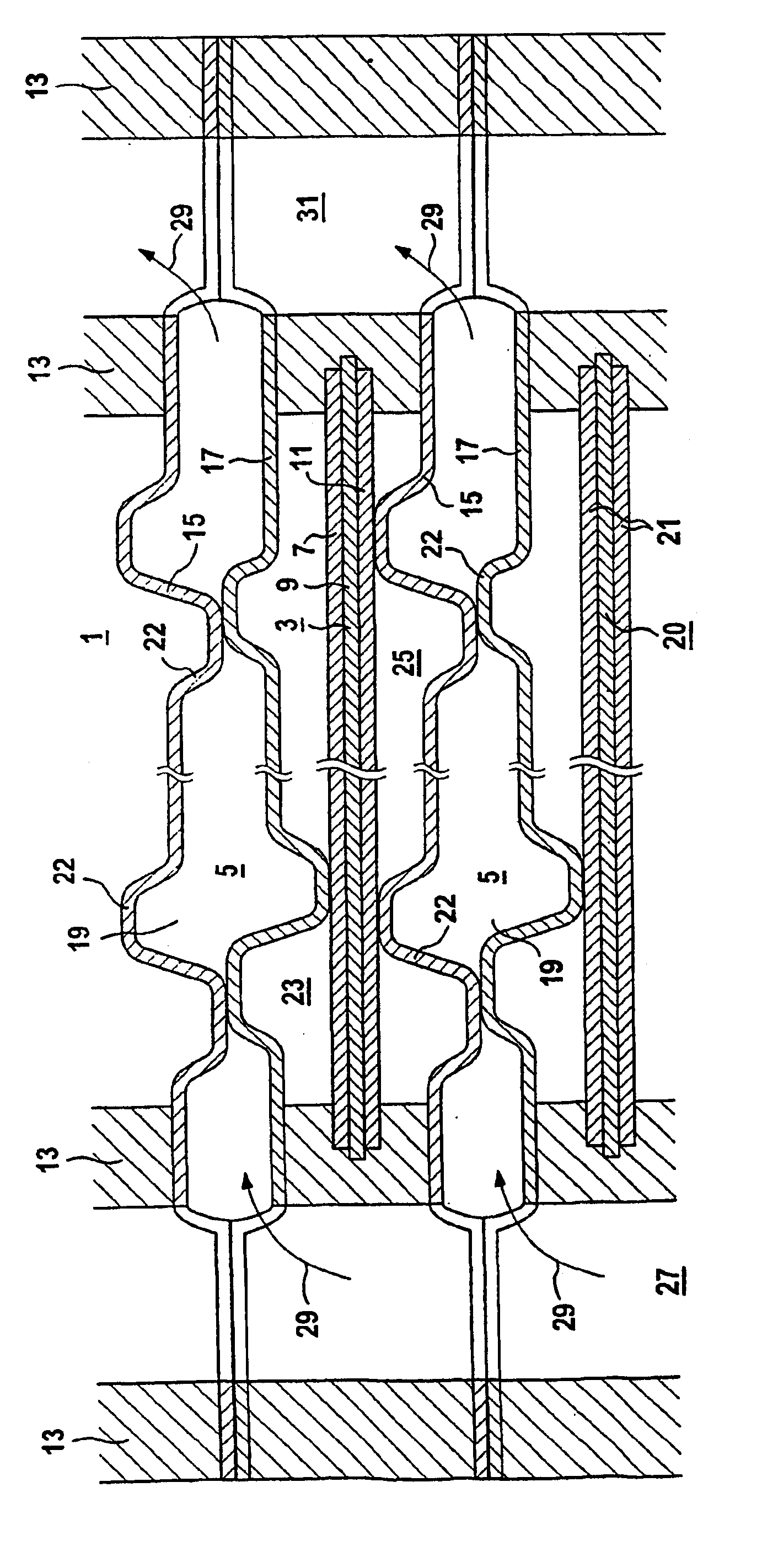Low-temperature fuel cell
a fuel cell and low-temperature technology, applied in the field of low-temperature fuel cells, can solve the problems of difficult deformation, difficult mechanical deformation, and relatively brittleness of interconnector plates of this type, and achieve the effects of simple bending, easy mechanical deformation, and successful discharge of current and hea
- Summary
- Abstract
- Description
- Claims
- Application Information
AI Technical Summary
Benefits of technology
Problems solved by technology
Method used
Image
Examples
Embodiment Construction
An exemplary embodiment of the invention is explained with reference to a FIGURE. The FIGURE diagrammatically depicts a section through a low-temperature fuel cell 1, which includes an electrolyte electrode assembly 3 and two interconnector plates 5 which adjoin the electrolyte electrode assembly 3. The electrolyte electrode assembly 3 includes an anode 7, an electrolyte 9 and a cathode 11. The electrolyte electrode assembly 3 and the interconnector plates 5 are mounted in seals 13. The interconnector plates 5 each include two metal sheets 15, 17, which between them form a cavity 19. Adjacent to the low-temperature fuel cell 1 there is a further low-temperature fuel cell, which likewise comprises an electrolyte electrode assembly 20 with two electrodes 21.
The two metal sheets 15, 17 of the interconnector plates 5 each contain 57% of nickel, 16% of molybdenum, 15% of chromium, 5% of iron, 4% of tungsten, 1.5% of cobalt, 0.5% of manganese and 1% of other metals and impurities. The two...
PUM
| Property | Measurement | Unit |
|---|---|---|
| thickness | aaaaa | aaaaa |
| thickness | aaaaa | aaaaa |
| temperature | aaaaa | aaaaa |
Abstract
Description
Claims
Application Information
 Login to View More
Login to View More - R&D
- Intellectual Property
- Life Sciences
- Materials
- Tech Scout
- Unparalleled Data Quality
- Higher Quality Content
- 60% Fewer Hallucinations
Browse by: Latest US Patents, China's latest patents, Technical Efficacy Thesaurus, Application Domain, Technology Topic, Popular Technical Reports.
© 2025 PatSnap. All rights reserved.Legal|Privacy policy|Modern Slavery Act Transparency Statement|Sitemap|About US| Contact US: help@patsnap.com


